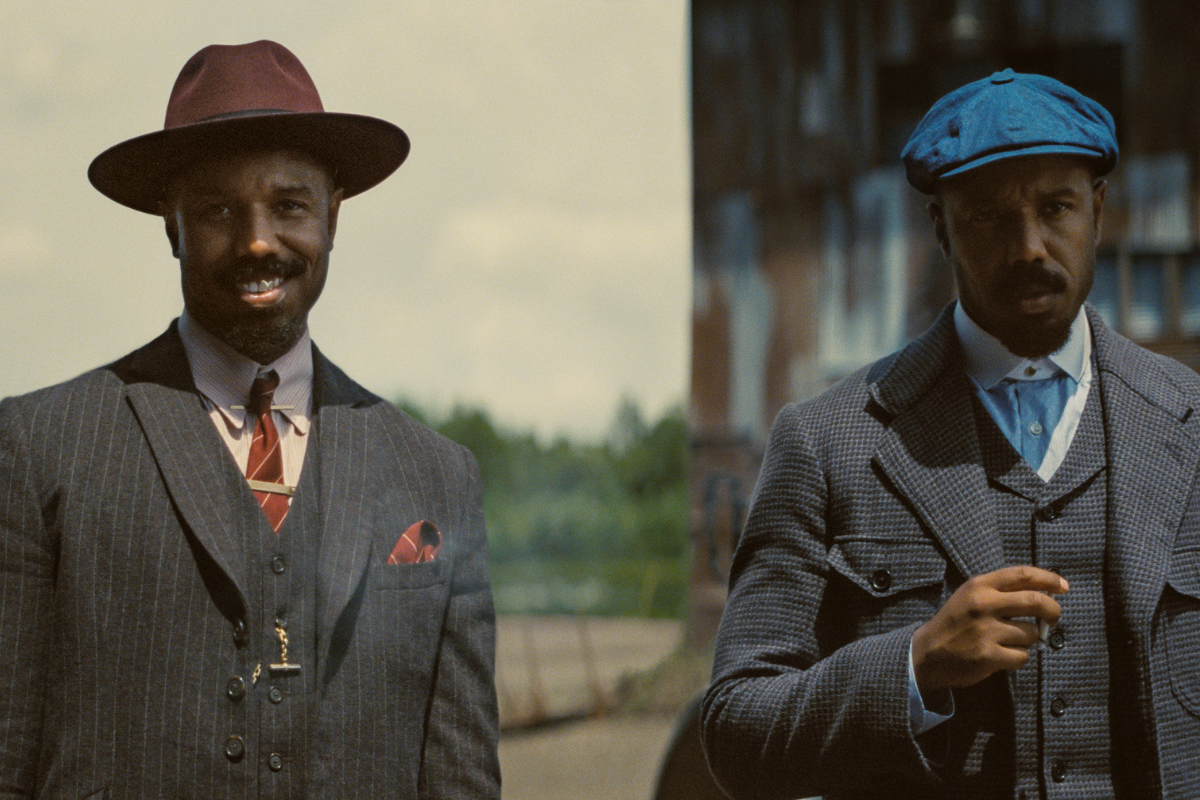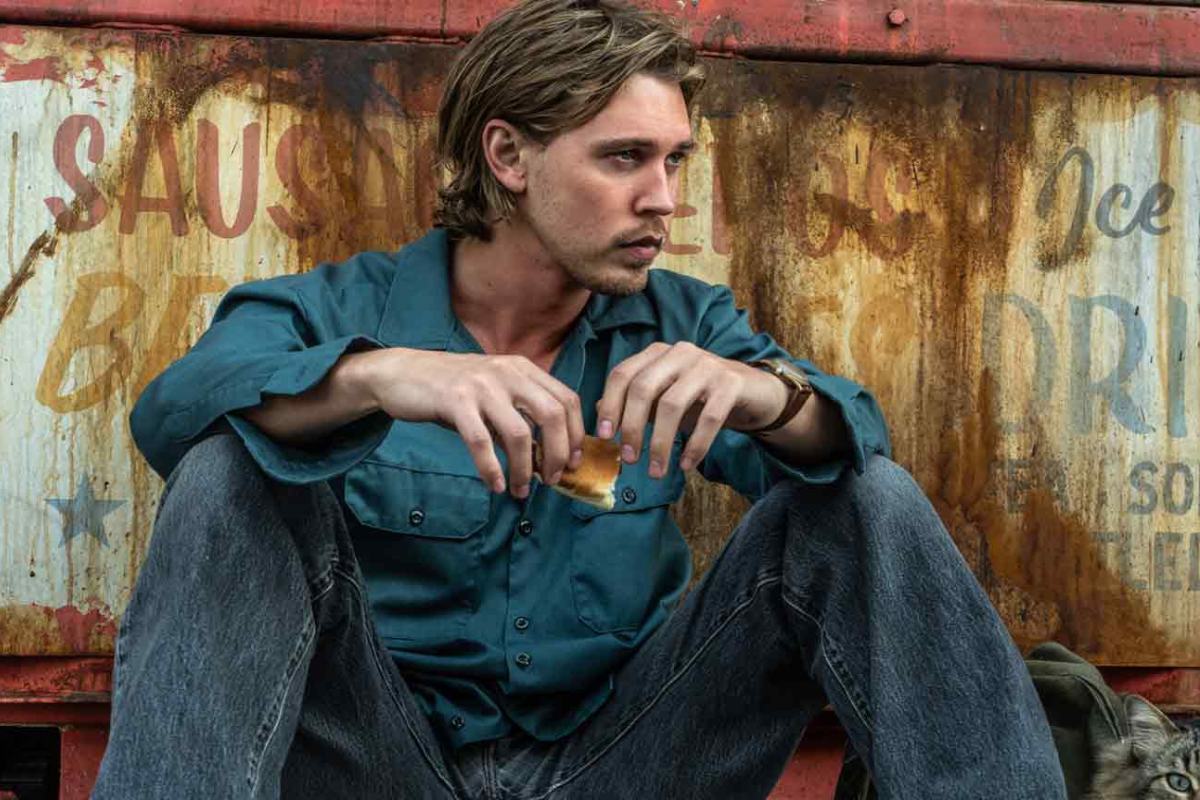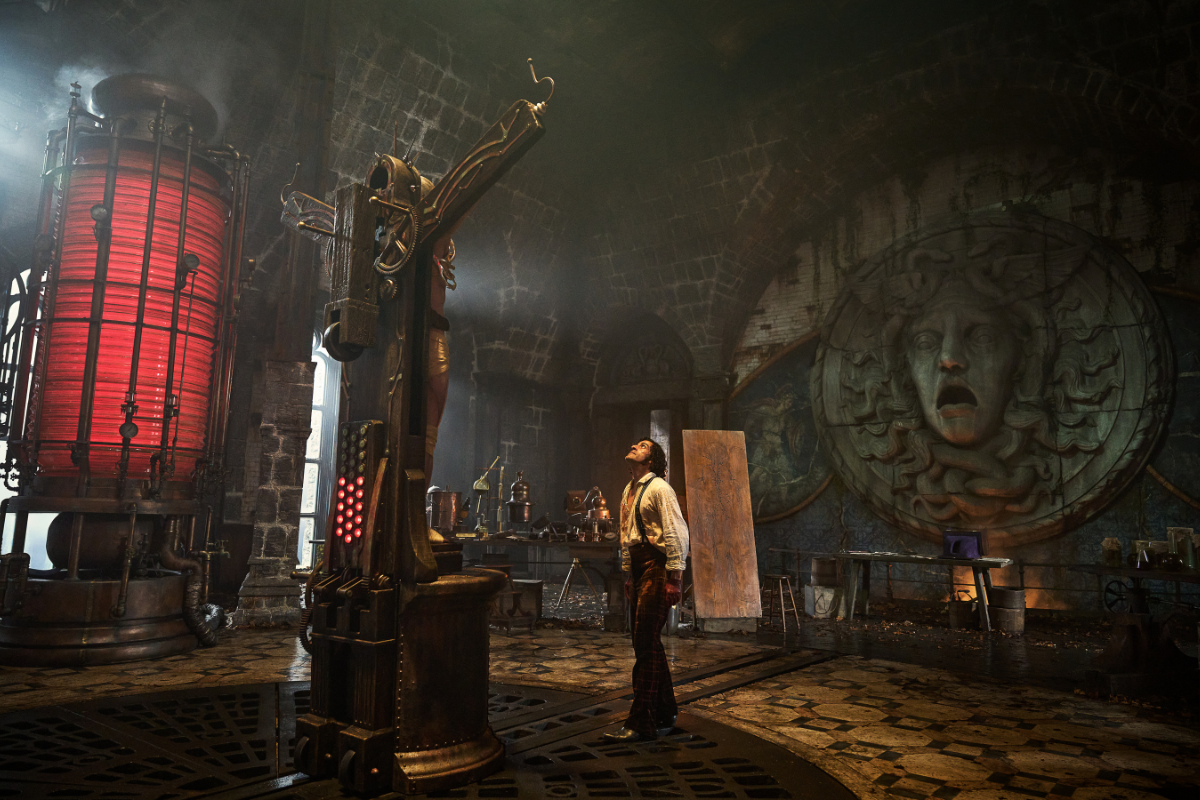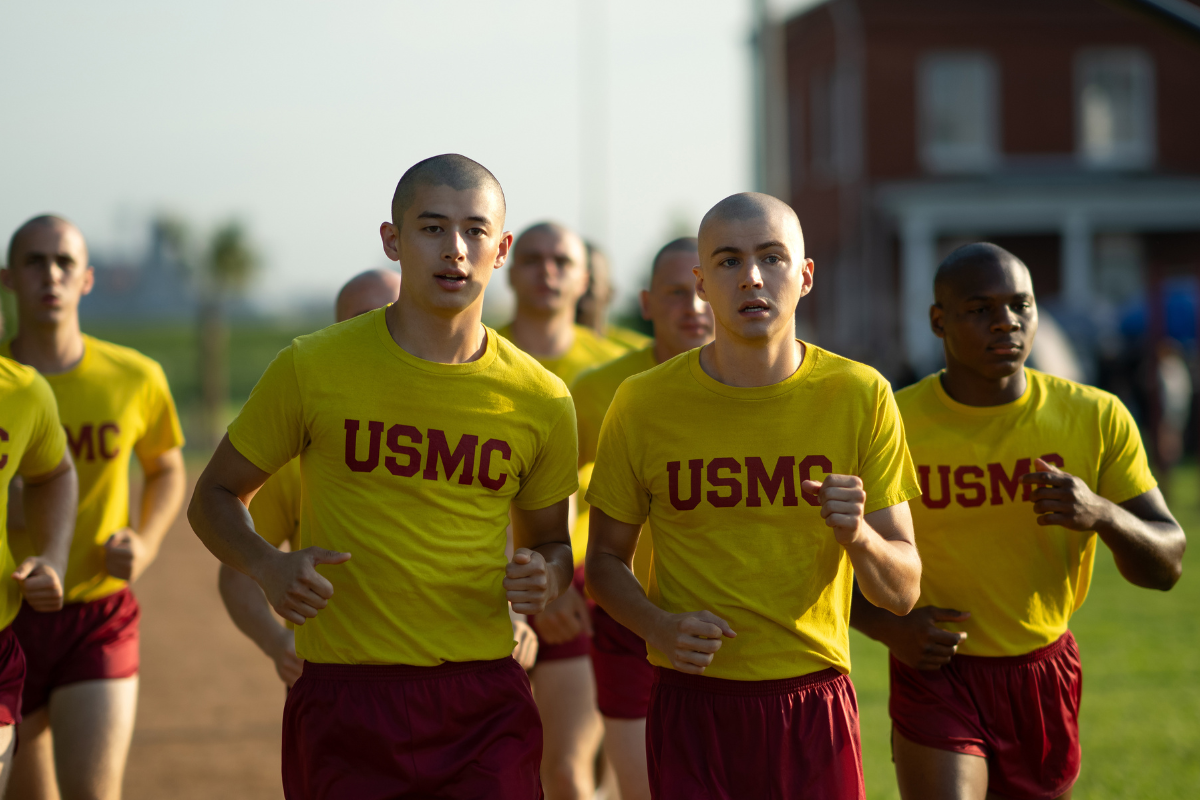The Tao of ‘Everything Everywhere All at Once’
Identifying a theme centers you as an artist and clarifies your work, and the best time to do this is during the first stage of filmmaking: writing the script.
Stories typically reflect a variety of themes. They swim below a tale’s surface like so many fish in the sea, but for the reader or viewer to properly focus their attention and enjoy their voyage through the plot, they must be guided by a single theme. This also applies to the filmmaker. I often think of what Francis Ford Coppola said: “When you make a movie, always try to discover what the theme of the movie is in one or two words.” He mentioned with respect to his film, The Conversation, “they brought all these coats to me, and they said: Do you want him to look like a detective, Humphrey Bogart? Do you want him to look like a blah blah blah. I didn’t know, and said the theme is ‘privacy’ and chose the plastic coat you could see through. So knowing the theme helps you make a decision when you’re not sure which way to go.”
Identifying a theme centers you as an artist and clarifies your work, and the best time to do this is during the first stage of filmmaking: writing the script. Storytelling can be a chaotic enterprise. The theme provides ballast to a screenplay before it sets sail into the choppy sea of the plot. In Save The Cat!, Blake Snyder writes that theme is written into a script through the dialogue of a supporting character in the first five pages. This is not always the case, though, as theme can also be introduced visually.
For example, in David Lynch’s Blue Velvet, the theme of the film—the perfection of the surface shouldn’t be taken at face value, as there’s a prevailing darkness that exists beneath it—is conveyed visually. We comprehend this idea through a visual metaphor that Lynch wrote and subsequently shot: after depicting a picture perfect suburban landscape, the camera descends below this tableau, through its manicured grass, deep into the ground, revealing a horde of insects mauling each other in the darkness. Either approach can convey a theme, whether viewers recognize it consciously or not (theme is often absorbed subconsciously at the start, as making it too clear early on risks detracting from the audience’s sense of discovery—it’s a bit of a balancing act).
Then there are films like Everything Everywhere All at Once that eschew such conventions while simultaneously adhering to them, which is befitting a movie within which the multiverse plays both a plot-driven and metaphorical role. Theme could not play a more important role in this film, because without it, viewers are apt to get lost in the sheer insanity that plays out on the film’s surface. However, the film’s theme is not immediately apparent to us at the start; in fact, it isn’t until near the end of the film when the directors, Daniel Kwan and Daniel Scheinert (collectively known as Daniels), build a scene between its protagonist and ostensible antagonist that is, top to bottom, the dramatic realization of the theme.
I’ve watched this movie several times and each time I find myself in this scene, the tears begin to flow. It’s spontaneous, it’s reflexive; it just happens. It’s our jobs as screenwriters—and the jobs of the directors who shoot the screenplays—to transfer emotions through the screen and into the viewers. It’s as though we’re infecting the audience with a virus, an emotional virus of sorts, and it’s our job to make the virus as contagious as possible. In this scene, Evelyn (Michelle Yeoh) confronts her daughter Joy (Stephanie Hsu) outside of the family’s laundromat about their fraught relationship.
In a movie that whips the audience from one universe to another, simultaneously assaults and dazzles us with set pieces from the theatre of the absurd, thrills us with first-rate martial arts fight scenes, makes pop culture references to other movies of varying genres, utilizes multiple languages and dialects, and employs some of the smartest metafictional casting I’ve ever seen, the entire movie really boils down to this one, simple scene: a mother and daughter recognizing that what is important is their relationship and the time to recognize that is now.
Family members are themselves branches into new genetic universes, born out of the conception of two separate sources of DNA and then let loose into the world to tread their own independent paths. Parents think they can control their children, often perceiving their offspring as mirrors of themselves—the opening image of the film is a reflection in a circular mirror of Joy flanked by her parents as Evelyn holds a hand over her daughter’s mouth—but they can’t control them, and that’s often a startling revelation.
They can only really feed them and guide them, and speaking as a parent myself, the latter can prove quite difficult. Scheinert has said, “I have one foot in the character of Joy, the younger generation, and now I see myself in the character of Evelyn as a parent, and now I can fully see my movie as a reflection of this experience of generational trauma, but also generational love, like what it means to stretch in both directions like this.” He goes on to say, “[Generational love] became our guiding light very early on, and we knew that the movie was going to be about a family and that we could throw crazy ideas at the wall. But the litmus test would be like, does that complement the journey of this family?”
The notion of letting your child go, to embark down their own path in life, is both terrifying and necessary; however, the choice to remain a part of your family or leave your family does not have to be binary. These two paths are not mutually exclusive, but rather exist in push-and-pull opposition to one another. This concept is at the center of Taoist philosophy.
This scene is the type of scene that might be labeled as on the nose or lacking subtext in another film, but here, its front-and-center ordinariness is what makes it so effective, having followed a two-hour seesaw of euphoria and nihilistic destruction. It is stripped of metaphor and that dose of reality hits the viewer hard. Joy tells her mother: “I don’t want to hurt anymore, and for some reason when I’m with you, it just hurts the both of us. So, let’s just go our separate ways, okay?” She goes on to tell her to “Just let me go.” This dialogue is underscored by intercuts to simultaneous events occurring in the various multiverses established throughout the film, including Joy stepping into an everything bagel that will annihilate her or anything that enters it, as Evelyn finally lets her go.
The decision to let her daughter go is short-lived, however, as just when Joy is about to drive away (and sink into the bagel), Evelyn changes her mind and coaxes Joy from the car. While this is the start of her attempt to get Joy back and pull her from the precipice, it is not without admonishments. For example, she says to her daughter: “You got a tattoo and I don’t care if it’s supposed to represent our family, you know I hate tattoos. And of all the places I could be, why would I want to be here with you? Yes, you’re right, it doesn’t make sense.”
This is a dexterous piece of dialogue, as it represents the balance of opposites: the tattoo represents her family, but her mother hates tattoos. Evelyn goes on to say to Joy: “Maybe it’s like you said, maybe there is something out there, some new discovery that will make us feel like even smaller pieces of shit. Something that explains why you still went looking for me through all of this noise. And why? No matter what…I still want to be here with you. I will always, always want to be here with you.” Joy asks her mother, while sobbing, in response: “So, what? You’re just going to ignore everything else? You could be anything, anywhere. Why not go somewhere where your daughter is more than just…this? Here all we get are a few specks where any of this actually makes any sense.” Finally, Evelyn states, “Then I will cherish these few specks of time.”
The filmmakers cut to the multiverse once again, in a series of flashes, as Joy continues to sink into the everything bagel. As she is about to succumb into nothingness, Evelyn’s iPhone indicates a “critical” status, and the film enters a montage of all of its multiverse paths reaching a collective turning point, which hinges on Joy reaching out of the depths of the bagel—her fingers at first reminiscent of hotdogs due to post-production distortion, an image that’s become symbolic of love and acceptance through Evelyn’s romantic universe with Deirdre, before resolving into a clear image of her hand—and choosing to embrace her mother and remain a part of the family, at least for the time being.
At this juncture in the film, its point may seem pretty clear: family is representative of one’s world and to deny the connection to it is, in a sense, to enter a state of non-existence, as one’s identity is forever tied to the origins of a specific path/universe. You can’t simply choose a different universe in which your family no longer exists, as to do so is to destroy yourself. However, while this explanation seems simple enough, it actually means everything and nothing at the same time and is only effective because of how it’s set up.
A profusion of symbols and metaphor lead up to this scene, a preamble to this moment that finally allows us to breathe, to take in the air of the characters’ present moment—and we’re grateful for this moment after being jostled back and forth from one alternative reality to another. This is a monumental feat for the filmmakers to achieve, especially in an era where the present moment is becoming shorter and shorter for us all, our minds occupied by the endless paths of the internet.
The internet and its infinite options, and perhaps alternative facts, is what is being critiqued in this film, specifically how the system doesn’t refine one’s life, but rather divides our attention and fragments our minds, leading to the dissolution of the world that exists outside of the electronic rectangle in our hands, the world in which our family, not their Instagram profiles, exist in three-dimensional, flesh and blood reality. “Let’s make a movie that’s nihilistic and acknowledges that!” Kwan has said in regard to brainstorming the idea for the film with co-creator, Scheinert. “Then it just kind of bounced back and forth until we’re like, ‘Oh, the multiverse is the perfect metaphor for what it feels like to live right now.’ If we can explore all of our neuroses and fears through the multiverse, maybe we can learn something about ourselves.”
We are not living in our realities, we are living in the pseudo-reality of the internet, and the multiverse is the dramatic metaphor the Daniels employ.
In order to reach the catharsis, the pay-off of calm this scene embodies, the Daniels need to first set up the noise and they spend the majority of the film doing just that. However, everything can’t just be noise. It can’t just be Joy’s everything bagel, there must also be Waymond’s cream cheese to pull us in the opposite direction. Stopping the noise completely is an impossibility, though. We can’t go back to a pre-smartphone era because that ship has sailed. The Alphaverse is the first universe to make contact with the others, and ostensibly the most technologically advanced; however, the production design of the world, with its broken-down van and outdated computers through which the characters navigate the multiverse, is intentionally anachronistic.
It calls attention away from the state of our current technology, because the Daniels don’t want us to focus on the technology but rather on what the technology has done to us. There’s no need to see the tech because we’ve become the tech; our minds have been taken over by it, been fractured by it. We rarely see smartphones in the film, and the only time we see them is when they’re used as vehicles for the multiverse—it’s how the characters (and we as the audience) track which multiverses they’re dipping into in order to verse-jump and/or acquire new skills from the alternate versions of themselves.
When Alpha Waymond first confronts Evelyn in the elevator about the multiverse, he places two Bluetooth earpieces on her and hands her her phone, to which she quips how she hates when he downloads all these apps onto it. She looks at the phone, and as a line of light illuminates her head, she sees a graphic of her brain on the screen and text that reads: “Alternative Life-Path Scanning.” She then experiences a cascade of flashbacks from her present life path, from birth through the present moment in the elevator, as though the app must evaluate the current path before presenting her with glimpses into the others.
Once she realizes it’s not an app, it’s her life—or, more specifically, a device through which infinite versions of her life can be explored and attained—she is left in a visible state of bliss. This is the first inkling we get that the multiverse is a metaphor for the web and the infinite reflections of ourselves we can create, explore and destroy through it.
If anything, the anachronistic production design in the Alphaverse is meant to conjure a sense of nostalgia for a time just prior to our minds being taken over by the internet, a smartphone glued to our fingers every waking minute of the day, a moment in which we stood on a precipice just before it was too late…because now it is too late. The operation center inside the van feels low-rent cyberpunk; the vibe is Max Headroom and we pine for it. We have progressed infinitely farther than this tech in our current society, but perhaps due to such a rapid progression, our brains have not been able to catch up. Perhaps we are so behind we can’t even recognize the tech as tech anymore, we simply recognize the tech as part of ourselves, and if that’s the case, this marks a dangerous tipping point.
Research is starting to expose connections to adolescent social media use and a resulting rewiring of the brain. In a recent Pew Research study, 97 percent of teenagers use social media every day and a startling 46 percent of them report that they are online “almost constantly.” Insecurity and anxiety in teenagers are on the rise and the connection to internet use is inescapable. Neuroscientists have found that “children who habitually checked their social media feeds at around age 12 showed a distinct trajectory, with their sensitivity to social rewards from peers heightening over time. Teenagers with less engagement in social media followed the opposite path, with a declining interest in social rewards.”
The multiverse does exist and it is the internet—the movie suggests the two are indistinguishable. The Alphaverse has built a technology that maps all the other universes and allows an individual to travel through them, to pick up skills and literally assume the bodies of their other selves. This is, essentially, what the web allows its users to do. However, these paths you take, through the multiple versions of yourself on an ever-increasing variety of social media profiles, will never be as real as the present moment or as concrete as the path you’re on now.
These other paths may exist, in a sense, but they’re fleeting, they’re repetitive hits of dopamine that leave you with a depletion of the chemical once you return to your primary universe/life. Social media is designed to activate the reward centers of the human brain and trigger dopamine as a means of keeping the user on the site as long as possible—the longer you’re on it, the more of a chance its advertisers have to sell their products to you.
Human beings are biologically predisposed to connect with other human beings, as it’s key to our survival as a species, and the brain releases dopamine when we make these connections in order to ensure we continue making them. Social media is a simulation of this process. It tricks the brain into thinking these connections are real, and then makes the exponential possibilities of making more connections attainable within milliseconds after the last connection we made.
Dr. Anna Lembke, Chief of the Addiction Medicine Dual Diagnosis Clinic at Stanford University, has said, “The problem with things that release a lot of dopamine all at once is that our brains have to compensate. But this is really the key point—our brains don’t just then bring our dopamine firing back to baseline level. It actually pushes dopamine levels below baseline. We go into a dopamine deficit state. That’s the way the brain restores homeostasis: If there’s a huge deviation upward, then there’s going to be a deviation downward. That’s essentially the comedown…that moment of wanting to stay online and click on one more video or connect with one more person.”
This phenomenon seems to be evidenced by a recent shortage of the drug Adderall, announced by the FDA in October—overwhelming demand for the drug, which increases dopamine and norepinephrine to the brain, has surpassed the supply. The drug is often used to treat ADHD, and there is no greater distraction to our attention than the everything bagel of the internet.
Our minds fracture if we attempt to focus on the endless possible routes our lives could take, as represented by Joy’s power to manifest all her possibilities at the same time. Each time we indulge a possibility, we retreat deeper into the fancies swirling inside our heads and withdraw from the present, which ultimately chips away at the fundamental reality in which our five senses are rooted.
The movie takes this concept to the next level, building a dramatic narrative around the techno-supernatural power of living all potential lives at once; however, as a nice contrast to current examples of the superhero genre that use the multiverse as a device, Everything Everywhere All at Once is much less a superhero film than a cautionary tale about ordinary people.
When the filmmaking duo began writing the film, “The internet had started to create these alternate universes,” said Kwan. “We were for the first time realizing how scary the internet was, moving from this techno optimism to this techno terror. I think this movie was us trying to grapple with that chaos.” It is interesting to note that the initial version of the script was written for Jackie Chan in the leading role. When Chan turned down the opportunity to star in the film, the lead was changed to a female and modified for Michelle Yeoh, which is perhaps indicative of how a single decision can create an entirely new story, or universe, if you will.
The script itself feels like a different path in the multiverse sparked by Chan’s unavailability and the idea of Yeoh, which resulted in a page one rewrite. Making a movie in Hollywood is its own special type of chaos, and we often must adapt to what seems like an endless amount of obstacles thrown at us on a daily basis. Each decision a filmmaker makes alters their story, just as each decision the characters make in this film alters their life paths.
Given the circumstances within which we find ourselves, and within which the characters find themselves, all we can hope to do is attempt to find balance within the noise. At a time of such cultural unease, which happens to coincide with skyrocketing cases of depression and ever-increasing suicide rates, the way to balance ourselves is to focus on what’s important in life, what’s important in our own moment, and not in the projections of other life paths that are not our own. This is the theme of the movie.
The Daniels employ symbolism throughout the film to support the importance of finding balance through the yin and yang. Numerous critics have written about the reference to this symbol in the film, and I think accurately so. The idea of balance is of particular importance to Eastern spiritualities. In Taoism, the contrasting forces of positive and negative are considered complimentary and exist in relation to one another.
Visually speaking, this idea is reflected in the yin and yang. The symbol represents the balance between opposites, and with respect to the Tao, the potential for equilibrium between human beings. Every action we take generates a counteraction, which involves either the decreasing of the yin and increasing of the yang, or vice versa, in equal proportions over time. In other words, nothing exists without its opposite; they devour each other, yet fulfill each other. Good only exists in proportion to evil, and evil only exists in proportion to good. In the film, Waymond’s googly eyes, which are largely white with a black center, represents the positive and Joy’s everything bagel, which is largely black with a white center, represents the negative.
Dramatically speaking, the movie’s protagonist, Evelyn, finds herself stuck between these two forces, at times swayed in one direction, and at other times, swayed toward another. At the start of the film, she is resigned to this place in the middle, trapped inside the prison of her laundromat, attempting to escape it through distant dreams of other lives (as evidenced by the deductions the IRS questions on her tax forms, which include business expenses for singing, writing novels, teaching, cooking, water massage, and other alternate career pursuits). However, by the end of the film, Evelyn completes her arc when she realizes that this life, doing laundry with her family, is all she needs, because it is the middle—it is neither completely positive nor completely negative.
The first time we are introduced to Joy, she stands joylessly in her mother’s laundromat staring at a slow-motion shot of a circular window of a washer spinning clothes—the image is an off-white circle, inside of which spins a mixture of dark and light clothes, which has the effect of merging a black-prominent yin with a white-prominent yang. In other words, it merges the everything bagel with the googly eye.
Through the window, a garment with a black and white chevron pattern emerges from the spinning clothes, however briefly.
With respect to pop culture and entertainment, this particular pattern has become synonymous with David Lynch’s television series Twin Peaks, which itself utilizes balance as a theme. The references to the yin and yang in Twin Peaks are significant, the most noticeable example being the floor of the famous red room set, its zigzag chevron pattern directing the shades of light and dark into and out of one another.
If you’re thinking it is a reach to associate the brief appearance of this garment to Twin Peaks, you must consider the overt Twin Peaks reference in Evelyn’s verse-jumping later in the film. While physically standing in the laundromat, she literally transports her mind into the red room from Twin Peaks, the very place in which this black and white floor exists, for one frame:
David Lynch has called the red room an “in-between place,” as it’s where the chaos of the world of Twin Peaks is balanced. It is the space where opposites confront each other and the yins and yangs decrease and increase in proportion to one another. This is the place where both sides of a character exist simultaneously, but are separate from one another, like the good and bad versions of Agent Cooper.
The laundromat is Everything Everywhere All at Once’s red room. It is the place where Evelyn reconciles the positive and negative aspects of her life, recognizing that her life is neither positive nor negative, that it is simply her life and she better stop jumping out of it and diving back into it, since it’s the only life she’s got.
Everything Bagel = The extreme of darkness, the negative, depression, unhappiness, seriousness
Googly Eyes = The extreme of lightness, the positive, happiness, goofiness, kindness
Washing Machine = The compromise between the above; the mixture of both worlds. It represents the truth of our reality, if we recognize it as such. In Buddhism, this path is referred to as the middle way.
As Joy stares at her life spinning in front of her in the laundromat, her eyes seem to imply she can’t see what’s in front of her at all—her eyes are focused inward, on what’s broken within her. As we watch the film, we learn that Evelyn had experimented on Joy in the Alphaverse in order to advance her research into verse-jumping, and as a result, permanently damaged her daughter’s brain. This consequently led to Joy adopting the antihero persona of Jobu Tupaki and gave her the ability to create the everything bagel. The filmmakers directly tie the annihilation of the world, and Joy’s motivation to do so, to Evelyn’s actions.
Treating your child like a science experiment, wherein you’re preparing them to pursue every possibility in life, is the Daniels’ most extreme metaphor of helicopter parenting. The filmmakers are specifically addressing the dangers of using your child as a vehicle through which you attempt to chase your dreams, as opposed to letting your child chase their own.
The reality of the story isn’t quite as abusive, but Evelyn’s controlling and narrowminded nature does damage to Joy’s life and while it may not have led to annihilation, it has factored into her crippling depression: how can she live up to all her mother’s expectations if those expectations are simply the unfulfilled goals of someone else? It’s an impossible task, yet a task so many parents unfairly ask their children to tackle.
The fracture in the relationship between Evelyn and Joy is deep and it stems from Evelyn’s own failures and the antiquated and unrealistic standards her father demanded of her. Evelyn recognizes the fissure between them, but does not understand, nor seek, its cause, as such a relationship is status quo for her. It’s only through the journey of the film that she is able to review her life choices and acknowledge her role in her daughter’s unhappiness. Earlier in the film, Alpha Waymond tells Evelyn, “Every rejection, every disappointment, has led you here to this moment. Don’t let anything distract you from it.”
Evelyn doesn’t fully understand this line until later in the film, and this is by design. Pieces of dialogue such as this, delivered from supporting to main characters early in the story, help plant the seed of the theme, which at first, the main characters either reject or simply don’t grasp, until after they’ve completed their character arc. By the end of the scene between Evelyn and Joy outside the laundromat, this seed has fully grown into its thematic tree and Evelyn can see it. She accepts the path she’s on, and all its imperfections, as this is her one true reality.
This is the very definition of the middle way that Buddhism, along with its Four Noble Truths, propagates and promotes. Evelyn has found her middle path and that is the current path. She has made mistakes, which have led to failure and regret, but life is a constantly changing phenomenon and each choice is an opportunity to take it into a new, and hopefully better, direction. This path encompasses the balance of both positive and negative, and she accepts that. She is no longer resigned to the middle, she embraces it. Family relationships will have their ups and downs, but we must proactively make efforts to stabilize them. In other words, we must fight like hell to maintain the mundane.
As Randy Newman sings “we are family” through the mouth of Raccacoonie, and apples, rocks and planets collide, Evelyn embraces Joy through the Daniels’ lens, its intimate depth of field caressing its subjects. In this moment, Evelyn finds meaning through balancing her relationships between her daughter and husband.
While immersed in the warm red glow of her laundromat’s sign, she has uncovered the purpose that has eluded her in her life up to this point. The irony, of course, is that her purpose was right there in front of her the entire time. Through her harrowing journey to and from opposite extremes, the audience relishes this moment of balance, as it provides us hope that we, too, may be able to find our way through the noise and use the present, and what is important to us in this moment, as our beacon.







